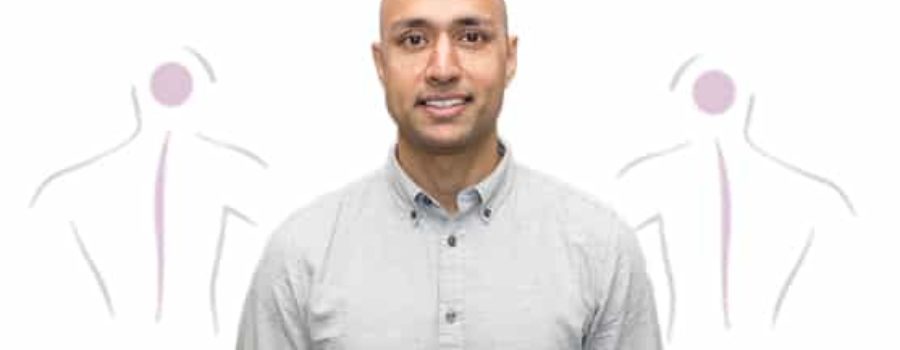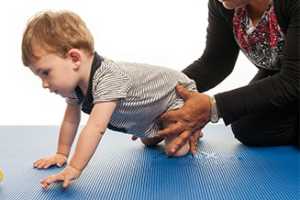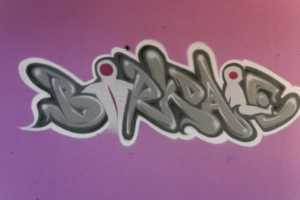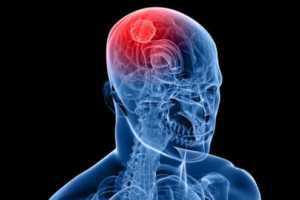No really…..You do have to see it to believe it (and then move)
In my introductory blog I conveyed my reflective thoughts on the importance for neuro physiotherapists to extend their knowledge and skill set to account for the ‘systems approach’ in assessing and optimising human movement. Following on from this I move onto the importance of what we see and what we interpret when controlling our bodies- our vision. I soon realised this topic justifies more screen time than a blog so I hope, through this article, to convey some ideas for assessment and treatment within neuro-physiotherapy practice.
If you decide to stop reading now then at least find out for yourself which eye is the most dominant….
http://www.diyphotography.net/a-neat-trick-to-determine-your-dominant-eye/
The reason why I am even writing a blog on the influence of vision on movement is because of the inspiring work of Farshideh Bondarenko (principle physiotherapist at Birkdale Neurological Rehab Centre) who for decades has been assessing and treating deficits in visual perception and eye-directed body movements as part of the overall management of the neurological patient.
Before going any further I must admit I found this area of learning heavy going due to the complex inter-relations of the visual system with the vestibular system and the multiple brain inter-connections that represent visual acuity and visual processing. The neuro-science research on this topic is still progressive but extremely fascinating to those wanting to truly optimise human movement and function. I hope that the reference list provided would be of assistance for anyone wishing to understand and appreciate how what we see and what we interpret can influence our movements.
Now, I appreciate that the visual system is a specialist branch of medicine with very decent optometrists, ophthalmologists and even behavioural optometrists helping the nation see well. I also understand that clinical psychologists or/and occupational therapists are well placed to assess and treat visual perception deficits. However, what I have quickly come to believe, is that physiotherapists should be learning from the aforementioned specialists to understand how visual acuity and perception impact on movement and critically, how our interventions, as movement specialists, need to consider visual acuity and visual perception.
Consider the impact homonymous hemianopia has on how a stroke patient views their environment and how this can feed into the asymmetrical posture with over dominance of the less affected side. Reduced smooth pursuit, strabismus, nystagmus and saccade dysmetria could influence postural instabilities of people affected by parkinson’s disease (PD), multiple sclerosis (MS) and transverse myelitis (TM). This could be present and impact on what is seen and perceived when turning around in the bathroom (just before the fall…familiar story?!). Finally, consider the deficits in working memory and agnosia for a person affected by traumatic brain injury (TBI) and their inability to organise smooth, seamless movement patterns.
A Quick Overview
Visual acuity= the clarity of vision largely determined by the state of the eye and the optic nerve
Is different to…
Visual perception= the cognitive process that interprets what is seen by the visual sensors
Visual acuity can be optimised by eye specialists so an onward referral may be appropriate. Also consider the intensity of light in the area the patient functions in as bright lights can lead to increase visual acuity but it could also be over stimulating, therefore consider the impact of grading lighting intensity. On the topic of light intensity consider the individual’s ability to adapt to light intensity such as moving from an outdoor environment to an indoor one and vice versa – are they ‘blinded by light?’ and is their movement affected? Also consider the benefit that contrast has on visual acuity such as bright objects or bright tapering along the edges of objects.
Visual processing is a big topic and comprises of the following qualities:
- Visual discrimination
- Visual memory
- Spatial relationships
- Form constancy
- Sequential memory
- Figure ground
- Visual closure
Visual processing is influenced by working memory – assimilating all the relevant information and using it as required to complete a task (making a cup of tea in a new environment) and long term memory – implicitly knowing where to look (turning your car into your driveway at home).
Saccades = rapid, ballistic eye movements used to change the direction of visual fixation, specifically the focus of the fovea. Eye movement determines the position of the fovea to help gain the most relevant visual information from the environment which in turn optimises the information input for visual processing and ultimately movement. Saccadic eye movements are driven by dopaminergic cells in the basal ganglia and superior colliculus and as such the expectation of reward is critical in promoting the continued, relevant level of saccades. Consider basing treatments in meaningful/stimulating/novel environments or using objects of personal significance to drive purposeful visual exploration.
Smooth pursuit = allows the eyes to closely follow moving objects and keep the fovea fixed onto the target.
Both saccadic and smooth pursuit eye movement allow for the generation of an internal representation of the environment and help guide our motor actions.
What We Can Learn From Neuro-science Research
- Eye movements are generally proactive in seeking information needed for guiding movement.
- Eye movement is normally followed by head/head and finally body movement- your eyes guide the movement being produced
- During the learning phase of movement vision acts more as a feedback system on performance with limited feedforward abilities
- Meaningful practice improves the motor action efficiencies though better multi-tasking and abilities of procedural memory, working memory- consider how well the neurological patient shifts their vision to allow seamless, adaptable movement
- Eye movement is influenced by the vestibular system (vestibular-ocular reflex (VOR)) and muscles of the neck (vestibular-collic reflex (VCR))
- Visuo-spatial deficits can be of prognostic value when determining movement recovery
Thinking About The Brain And Vision And Vision Processing (can lead to a headache)
It is complex to say the least, it is also fascinating and equally important to acknowledge when optimising movement. Areas of the central and peripheral nervous system which are related to vision and visual perception:
- Cranial nerves- particularly oculomotor, trochlear and abducens. These control the extraocular muscles
- Occipital lobe – local orientation, colour properties, movement detection
- Parietal lobe – ventral segment ‘what’ is it, dorsal segment ‘where’ is it
- Superior colliculus – key in directing eye movement to objects of interest
- Frontal lobe – Responsible for long term memory of where to look for task success. Also for attention to the task at hand
- Cerebellum – for accurate saccades and smooth pursuit
- Basal Ganglia- initiation and timing of eye directed movement
…..and finally the information sent to supplementary motor cortex
Assessment Of Vision In Relation To Movement And Function
- Visual acuity – assess speed, fluency and success of movement under various light intensities. Also assess movement in environments of varying contrast and shading (relevant to the individual) to determine object detection
- Visual processing – established tools include line bisection paper task, visual scanning paper task, image construction paper task, 3D construction task (wooden blocks or similar), 2D construction (puzzles)
- Use of other sensory distractions to determine attention and working memory such as multiple visual cues, auditory stimulus or less stable surfaces (standing on air cushion)
- Eye movement – assess saccades and smooth pursuit in traditional way (in sitting). Also consider assessing these in standing, tandem stance or whilst moving
- Consider eye movements with static and changing backgrounds
- Eye body co-ordination can be assessed with the patient crook lying with an air cushion under the head and pelvis. The patient has to grade the degree of activity between left and right body parts to maintain equilibrium and any deficits in VOR can be seen when the patient is moved through rotation in the coronal plane. The latency between eye movement and body movement can also be viewed by the clinician as the patient movement from left body rotation to right rotation using horizontal eye movement to the right side, all whilst on the two air cushions.
There are loads of websites online which can be used to assess and train visual processing. Check out these two:
Treatment
- Physiotherapy interventions for visual perception and eye guided body movement can be approached the same as one would for any other neurological deficit in that treatment could be bias towards restitution, compensation or adaptation interventions.
- Saccadic eye movements can be trained initially using slow velocities within a conservative range of motion which is within the patient’s current abilities. Progression would be brought about through increasing speed of saccades as well as range and number of saccades. Training could also work towards the direction of any visuo-spatial deficits such as saccades to the right hand side (in the case of right side spatial deficit)
- Smooth pursuit can also be trained at slow speeds with small ranges in controlled environments initially to minimise distractions. Smooth pursuit can be in vertical, horizontal, diagonal or random planes of motion. Progression would again be increasing speed of smooth pursuit, range of motion for smooth pursuit and moving towards the area of hemianopia or scotoma
- Spatial perception can be trained with patient derived reflection in motion, reflection on motion and/or clinician feedback (again during or after the task). Video analysis and playback can be a valuable tool in showing patients how they are moving
- Training visual search strategies using the appropriate level of difficulties and again using reflection and feedback as appropriate to the learning capabilities of the patient
- Training ‘meta-vision’ as part of the above suggestions
- All of the above strategies can be performed in varying postures with the graded inclusion of additional visual, auditory or tactile stimuli to increase selective attention and dual/multi-tasking
There you have it. My hope is that I have conveyed the importance of visual acuity, visual perception and eye movements in guiding the body through space in order to complete tasks and actions with success.
As neuro physiotherapists we are motivated to drive neuro plasticity. Judging by the amount of inter neuronal connections between all those specialist centres responsible for making sense of our world we would be foolish not to acknowledge the impact vision has on making sense of our world and the opportunity that exists to optimise it.
See for yourself!
Next month I intend to follow on with a short blog on the orientation of head and neck after neurological injury/pathology. How it can influence our awareness of our postures and how we can capitalise on this body region to improve outcomes for our patients.
References:
- Land, M.F. (2006). Eye Movements and the Control of Actions in Everyday Life. Progress in Retinal Eye Research. [Online]. 25 (3). P296-324
- Kerkhoff, G. (2000). Neurovisual Rehabilitation: Recent Developments and Future Directions. Journal of Neurology, Neurosurgery & Psychiatry. [Online]. 68 (6). P691-706
- Schutz, A.C, Braun, D.I, Gegenfurtner, K.R (2011). Eye Movements and Perception: A Review. Journal of Vision. [Online]. 11 (5). P9
- R.A. (2011). Visual Symptoms in Parkinson’s Disease. Parkinson’s Disease. [Online].




